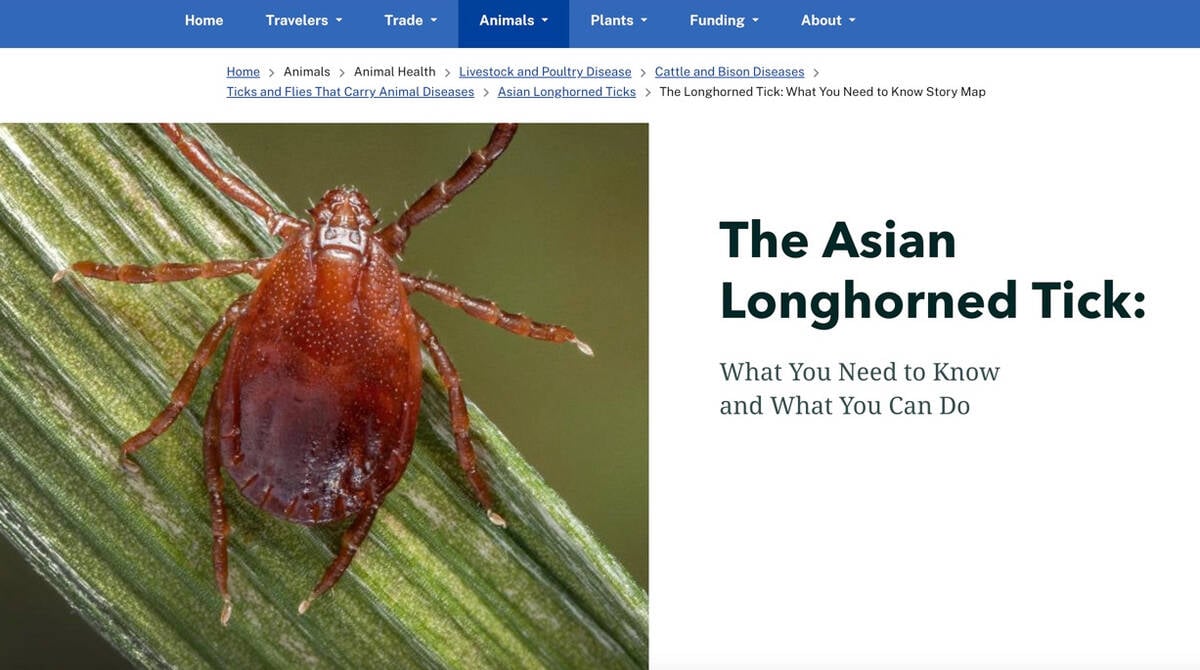Assessments of market-ready livestock | Audits must be conducted during loading and unloading
TORONTO — Jennifer Woods, a livestock handling consultant from Alberta, trains and audits people who handle livestock during transport and assesses animal welfare.
Transportation was added to the animal welfare audit in the United States after an undercover video from Westland-Hallmark in California showed downer cattle being abused.
Following that case, the American Meat Institute transport audit became the most recognized form of certification.
“We have to make sure the animals we ship are fit to transport. These videos that we see all trace back to animals that should never have been put on the trailer,” Woods said at a Canadian Meat Council meeting last week.
Read Also

New World screwworm not seen as trade threat
Canadian cattle producers shouldn’t be worried about the New World screwworm, which has become a massive concern for ranchers in Mexico and is threatening the southern United States
Audits should be carried out during loading and unloading, but that is difficult because animals may be moving great distances.
Auditors conducting a transportation assessment should include only the immediate loading and unloading areas and what they see.
Auditors will look for specific points, said Wood.
First, they look at how well the plant is prepared to receive animals.
Staff should be there to accept them and there should be a written animal welfare policy on hand.
Auditors will assess the amount of time between the arrival of the truck and the time offloading begins.
The plant receives full points if livestock are unloaded within 60 minutes, while deductions start the longer they wait.
The plant needs an emergency plan for animals in transit and a policy for dealing with downers and tools to handle them.
Euthanasia tools must be readily available and properly maintained so a downer can be killed before it has to be moved further.
Gates in unloading areas should swing freely and close securely. A bungee cord or twine does not properly secure a door.
Flooring should be non-slip and ramps need to be in good repair. Auditors will note if animals slip or fall.
Lighting should be like a bright, overcast day because flashes of light or dark areas distract animals.
Loading density is assessed only if there is a problem.
Incompatible animals should be segregated.
Electrical prod use is discouraged, and almost all plants do not allow them.
However, staff may use paddles or other tools that cannot be turned into a weapons.
The cause needs to be documented if animals arrive dead.
Wilful acts of abuse are not tolerated and the facility automatically fails the audit.
These include driving animals on top of each other, dragging a live animal, stepping or walking on the backs of live animals, slamming gates or doors on animals, applying electrical prods to sensitive areas, striking, poking or beating animals and driving live animals without adequate unloading facilities.
Producers and auctions also need to be educated to make sure they understand if an animal is fit to travel.
On the farm, loading ramps and alleys should be in good repair.
The ramp should have cleats, which need to be replaced if they come off.
There should be no gaps or holes or sharp or protruding objects. Non-slip flooring is recommended.
Gates must open and close securely.
The trailer must be in good repair and should be lined up properly with the loading chute.
Bedding, such as straw or shavings, should be provided if recommended for certain species.
For more information, visit www.livestocktransport.ca.















